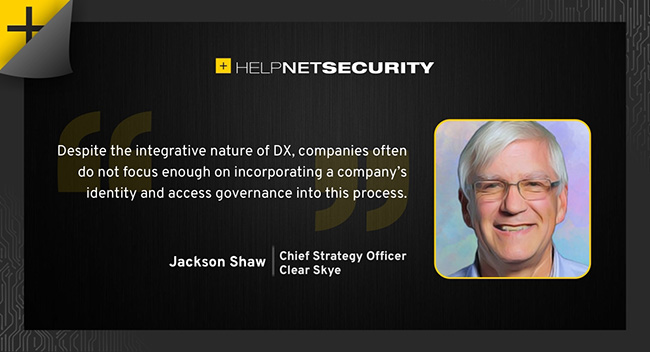Achieving digital transformation by overcoming identity fatigue
Conversations about digital transformation (DX) are so frequent and pervasive that we tend to lose track of how incomplete they can be. You might think that DX only concerns the Internet of Things (IoT), big data, and application programming interfaces (APIs). It is certainly about those things, but there is a lot more to DX.

Transforming a business is, first and foremost, a business matter. Any technological implementation of a DX project must flow from a business strategy. For example, DX is almost always about restructuring the relationship between a business and its customers. Whatever technology powers the transformation must align with the company’s customer-facing goals.
The DX process itself thus means evolving the connections between systems, business processes, devices, data, and people. It requires eliminating data silos and reducing the complexity of IT architectures. DX can also comprise the application of new artificial intelligence and machine learning algorithms across the business, along with the standardization of APIs and business workflows.
Unfortunately, identity, which is an essential underlying element of all of these things, can get lost in the rush to transform everything else.
Identity and digital transformation
Despite the integrative nature of DX, companies often do not focus enough on incorporating a company’s identity and access governance into this process. As you can imagine, DX ought to beget some sort of parallel identity transformation. Consider a common DX scenario, which is the deployment of cloud connected IoT devices to enable an omnichannel customer experience by adding sensors and kiosks to a retail setting so customers can order online and pick-up merchandise at the store.
Executing the IT side of this new business strategy requires some agility in identity governance and administration (IGA). Unlike traditional IGA, which dealt with granting identities and access rights to known employees, the new world of IGA for DX cannot exist in a vacuum — it must align with other transformed processes such as HR, GRC, ITSM, SecOps, and others to support enterprise-wide DX strategies that bring new-found business value and growth. Devices used throughout the enterprise may even have identities that need to be managed. The IT department, as always, will be on task to track access grants and any other duties under IGA.
Identity fatigue is the enemy of transformation
Digital transformation of identity isn’t as simple as swapping identity solution A for identity solution B, or spending more on your existing solution.
In situation after situation, we have seen what we call identity fatigue in organizations that are trying to transform themselves. The old platforms are too hard and slow to adapt to the new way of doing things. In fact, the traditional identity approach of specific and separate identity workflows is precisely what DX projects are trying to escape.
Specifically:
- The traditional IGA solution is integrated with only a few authoritative identity sources such as Microsoft Active Directory, with a lack of consistent access visibility across the entire enterprise.
- Identity administrators lack context, because they do not have visibility across multiple authoritative sources or other related security information.
- Static identity data is not relevant to organizations that are changing rapidly and regularly.
- Every IGA solution is required to integrate with a company’s preferred solution that manages digital workflows for their enterprise operations.
Resolving the impasse
What can be done about this friction between DX and identity fatigue? Identity can become digitally transformed when it becomes part of a company’s digital transformation platform.
To accomplish this, organizations can look for a solution that integrates identity governance with a workflow platform.
Such a solution would finally operationalize IGA by embedding it into the very processes that drive the organization. No longer treated as an afterthought, IGA programs will both be more successful and add speed to DX efforts as a whole. There would be no “going around” the system, as the system is merely part of the business flows already being used.
Making IGA part of the platform that’s driving DX makes IGA a natural, adaptable part of the DX project. Identity transforms along with the business, without inhibiting the progress of DX. Now identity fatigue can become a thing of the past.